Front Squat Best Guide – Workouts, Benefits, Muscles Worked and Technique Tips
This extensive guide to the Front Squat will provide workouts, technique tips, mistakes to avoid, benefits, muscles worked, variations, alternatives and much more.
What is the Front Squat?
The Front Squat is an anterior loaded, full body squatting exercise where the weight is held in the front rack position. The front rack position means that the weight is supported on the front of the shoulders and the upper chest.
The exercise is less common than the Back Squat and requires excellent shoulder, wrist, hip and ankle flexibility.
It is a natural progression from the Air Squat and Goblet Squat.
Performing the movement with the barbell is the most common form of the exercise.
It is characterised by an upright torso and demands a strong core to stabilise the movement. This makes it one of the best abs exercises.
- What is the Front Squat?
- Front Squat Muscles Worked
- Front Squat Benefits
- How to Front Squat
- Front Squat Technique Tips
- Front Squat Mistakes
- Front Squat Alternatives
- Front Squat Variations
- Front Squat Reps and Sets
- Front Squat Workouts
- Workout 1
- Workout 2
- Workout 3 – Bear Complex
- Workout 4
- Workout 5
- Workout 6
- Workout 7 – Incredible Hulk
- Workout 8 – Macho Man
- Workout 9
- Workout 10
- Workout 11
- Workout 12
- Workout 13
- Workout 14
- Workout 15 – MAD Complex
- Workout 16
- Workout 17
- Workout 18
- Workout 19
- Workout 20
- Workout 21
- Workout 22
- Workout 23
- Workout 24 – Pick Your Poison
- Workout 25 – Speed Deamon
- Workout 26
- Workout 27
- Workout 28
- Workout 29
- Workout 30
- FAQs
- What is Front Squat Good For?
- Are Front Squats Harder?
- Are Front Squats More Effective?
- Are Front Squats Necessary?
- Do Front Squats Build Abs?
- What is a Good Weight to Front Squat?
- Do Front Squats Build Mass?
- Do Front Squats Increase Testosterone?
- Do Front Squats Improve Posture?
- Do Front Squats Build Legs?
- Do Front Squat Train Glutes?
- Learn More
Front Squat Muscles Worked
Front Squats primarily target the lower body and core. They will significantly strengthen and enhance the following muscle groups:
- Quads
- Glutes
- Hips
- Hamstrings
- Spinal Erectors
- Core and Abs
- Upper Back
Front Squat Benefits
Fronts Squats are one of the most underrated exercises that exist. They have a multitude of benefits.
Build Muscle
As a heavy compound barbell exercise, the Front Squat is an exception tool to use within a hypertrophy training program.
You want to build muscle? Add the Front Squat into your training.
Get Stronger
This exercise will test and strengthen your body significantly. The Squat is the king of the strength exercises, and this variation will allow you to increase your strength.
Augment Mental Toughness
The Front Squat is a hard exercise. Not for the faint hearted.
As a result, it will make you mentally tougher as well as physically stronger. This is great news for your body and fitness and for life in general.
“If your expectations are always those of someone content to live without physical challenge, then when it comes time for mental, moral, or emotional challenge you fail to meet it because you are out of practice.
Meeting and overcoming obstacles are skills that can be honed, as opposed to talents with which we are born.” – Mark Rippetoe
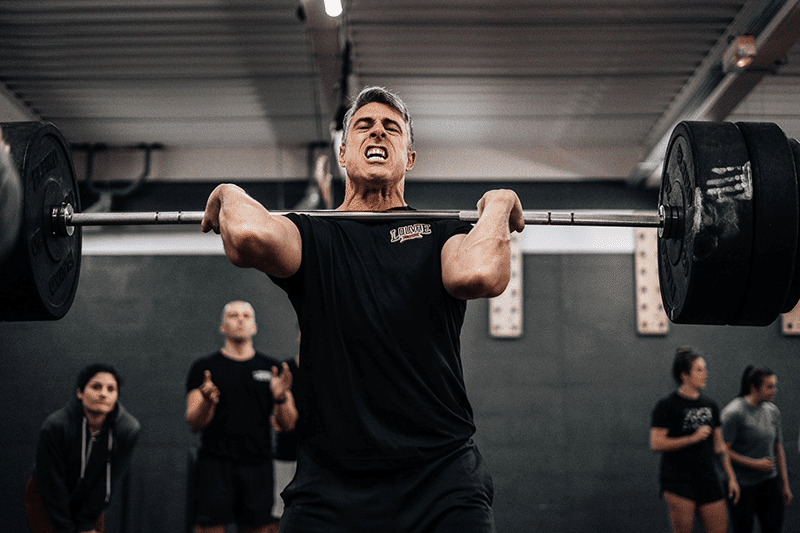
Enhance the Quads and Glutes in New Ways
If you want to build better glutes, or add muscle and strength to your quads then the Front Squat is an excellent go-to movement.
The mechanics that the exercise forces the body to adopt ensures that there is less pressure on the knees than with the traditional Back Squat.
Build Better Posture
During the Front Squat the athlete must hold a strong upright torso. Otherwise, the barbell will slip forwards and the rep will fail.
This primes the body for better posture in general life and well.
The exercise is a great one to include in your training if you spend a lot of time working hunched over a laptop.
Enhance Core Strength and Abs
The movement is one of, if not the best, core and abs exercise that exists.
Your core must work hard to stabilise the barbell at all times during the range of motion.
A strong core is one of the best assets that any human can have in terms of health and fitness. It provides a solid base for all movement and will protect against back pain, spinal injury and weakness in general.
If abs are your goal, Front Squats are a wise choice (in combination with an intelligent nutrition plan).
Develop Better Rack Mobility
The Front Squat will help to improve your front rack mobility.
By practicing this aspect of your fitness, you will also find other exercises such as the Clean will feel easier as well.
Augment Other Exercises
In a continuation of the point above, front rack mobility is not the only carry over that the Front Squat has for different exercises.
The movement of the Front Squat is also essential for other lifts such as the Clean and Jerk, Thruster or Wall Ball.
If you are an Olympic Weightlifter or functional fitness athlete then this exercise will be especially important for you.
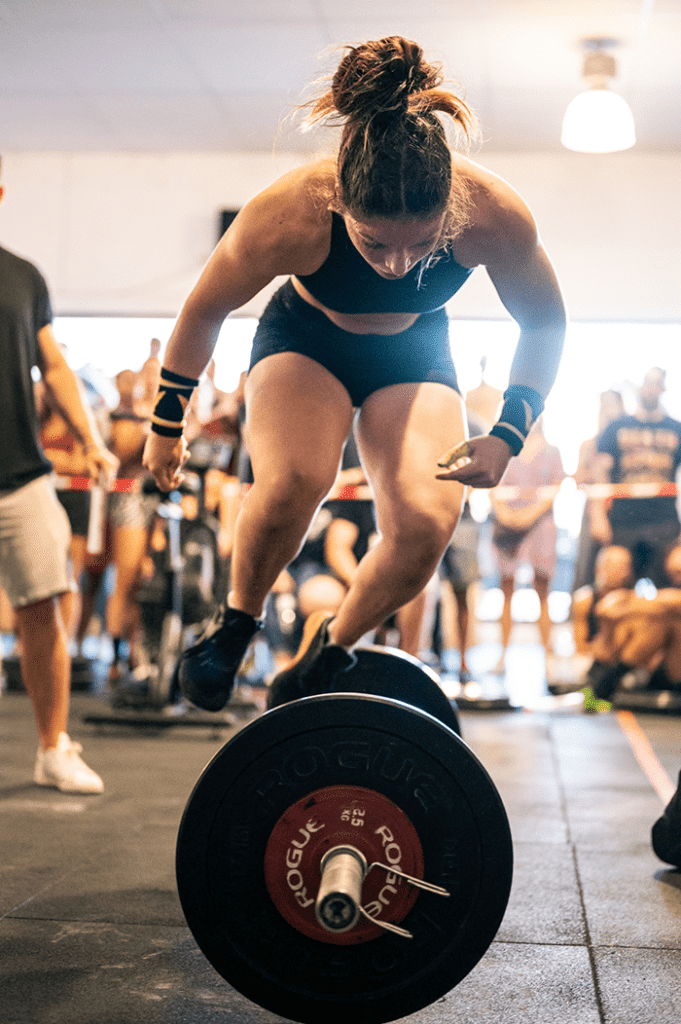
Exposure Weaknesses
Front Squats will help to expose all the following weaknesses:
- Overdeveloped pic minor, biceps or triceps that can lead to a hunched forward position
- Imbalances in the shoulder girdle
- Weaknesses in the core
- Front rack mobility issues
- Poor strength in the glutes and quads
- Hip mobility issues
- Problems with thoracic extension (the ability to keep your chest up)
- Lack of ankle flexibility
How to Front Squat
Set the barbell up on a Squat Rack. Ensure that it is at an appropriate height for you.
- Rack the bar securely on your chest and shoulders with your elbows high
- Take the weight with your body. Lift the barbell and take two steps back
- Stand with your feet roughly shoulder width apart
- Inhale and brace your core, glutes and quads
- Push the hips slightly back (to engage the posterior chain) and break at the knees
- Descend slowly whilst keeping a vertical torso
- Stay balanced by keeping the bar over the mid-foot position
- Descend to full depth
- Stand back up to the starting position. Push through the heels
- Exhale
- Repeat for the desired number of reps
Front Squat Technique Tips
These technique tips will help you optimise your lift.
Grip the Floor
Image your toes gripping the floor like the talons of an eagle when you lift.
This will help you to stay strong and balanced.
Keep your Chest Proud
Stick your chest out. Doing so will help to create a good platform for the barbell and keep your torso upright.
Hip Hinge
Don’t push the hips too far back during the exercise.
Pushing them back slightly will help to engage the glutes of the posterior chain. It will also help to keep the barbell aligned with the midfoot as well.
High Elbows
Check out this useful advice from Squat University about why you need to kave high elbows:
“If done correctly this will create a ‘shelf’ for the bar to sit comfortably on top of the shoulders and chest. Doing so will also increase the rigidity of your upper back.
This will help you maintain an upright trunk position throughout the entire lift. Leaving the elbows in low position can lead to a rounded upper back. This greatly increases the odds of dropping the weight as it gets heavy. You will also place your body at risk for injury.
Mobility issues at the shoulder and/or thoracic spine (upper back) may cause the lifter to not be able to reach the high elbow position. It’s acceptable to leave the fingers in contact with the bar and have an open palm to reach the high elbow position.”
Front Squat Mistakes
Make sure you aren’t slowing down your progress by making of these common mistakes.
Rounding the Upper Back
With the weight balanced on the front of the body it is easy to let the back round and droop forwards.
Make sure your spine stays straight at all times.
Low Elbows
Low elbows will let the barbell drop forwards.
Ensure that you push your elbows as high as possible at all times.
This will also help you to sit backwards and have an upright torso.
Not Squatting through the Heels
Not sitting into heels. Whereas in a back squat you want to imagine sitting back into your hips, in a front squat, this cue will cause too much of a lean forward. Instead, think about dropping straight down into your heels to resist falling forward.
Front Squat Alternatives
Add these alternatives into your training if you want to vary the stimulus.
- Cross-Arm Front Squat
- Goblet Squat
- Safety Bar Squat
- High Bar Pause Squat
- Narrow Stance Leg Press
- Front Rack Barbell Split Squat
- Front Foot Elevated Dumbbell Split Squat
- Dumbbell Step-Up
- Zercher Squat
- Box Pistol Squat
Front Squat Variations
Enhance your training with these variations.
Pause Front Squat
A simple change to the traditional exercise, adding a pause in the bottom position will make the Front Squat even harder and more beneficial.
Band Resisted Front Squats
Adding bands and / or chains to the barbell will raise the level of resistance and chance the way that the movement feels.
This is an excellent way to break through training plateaus.
Zombie Squat
If you are having trouble with your front rack mobility, or with keeping your torso vertical, try the Zombie Squat.
This is essentially a Front Squat with your arms out in front of you like the cartoon version of a zombie.
Because you cannot hold the barbell, it forces excellent, hip, knee and vertical torso positioning.
Heel Elevated Front Squat
This variation is excellent if you still have a way to go with the mobility side of the exercise.
Elevating the heels makes the entire squatting range of motion easier (less ankle mobility is required) and will further target the quads.
Thruster
The Thruster is a Front Squat into a Push Press and is common in functional fitness and CrossFit®.
It is a hugely effective conditioning tool, as well as developing strength and mobility.
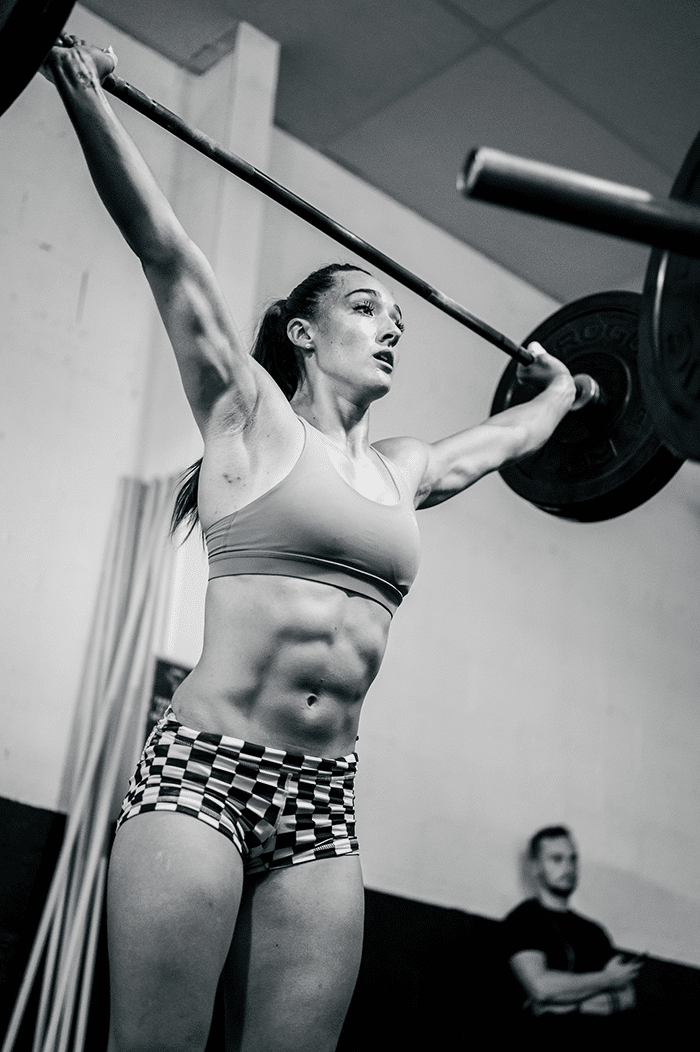
Front Squat Reps and Sets
Depending on your goal you should program the Front Squat in different ways.
For Strength
Keep the reps low and the weights high. Aim for 3 – 5 sets of 3 – 6 reps with long rest periods.
For Muscle
Aim for 3 – 4 sets of 8 – 12 reps. Rest periods should be kept between 30 – 45 seconds.
You can also introduce pauses and tempo eccentrics to maximise time under tension and stimulate muscle growth as much as possible.
For Conditioning
For muscular endurance and general conditioning, try incorporating Front Squats into a variety of functional fitness workouts (see below).
When you work strictly with only the Front Squat, go for 2 – 3 sets of 15 – 20 reps.
Front Squat Workouts
Now you know how to perform the exercise properly, scroll through and choose your next workout to test your skills.
Workout 1
For Time
21-18-15-12-9-6-3 reps of:
- Front Squats (115/75 lb)
- Bar Facing Burpees
- 200 metre Sandbag Carry (80/50 lb)
With a running clock, as fast as possible perform the prescribed work. Athlete must complete 21 Front Squats, 21 Bar Facing Burpees, and 200 metre Sandbag Carry for the first round. Continue with this pattern decreasing 3 reps each round until the final round of 3.
Score is the time on the clock when the last round of the 200 metre Sandbag Carry is completed.
Intended Stimulus
This task-priority workout will challenge stamina, endurance, and mindset.
The Front Squat load is light, so athletes should be able to complete all sets without rest or with no more than one rest break each round. The Bar Facing Burpee volume is challenging, but athletes should be able to maintain a relatively steady pace.
Expect the Sandbag Carry to be the most challenging and time-consuming aspect of the workout due to the load and overall volume.
Striving for 200 metre efforts that are under approximately 3 minutes will be the goal.
High-level athletes can strive to complete this workout in under 22 minutes, while most athletes should perform a variation that allows them to complete it in approximately 30 minutes.
Scaling Options
Intermediate
For Time
- 21-18-15-12-9-6-3 reps of:
- Front Squats (95/65 lb)
- Bar Facing Burpees
- 200 metre Plate Carry (45/25 lb)
Beginner
For Time
21-18-15-12-9-6-3 reps of:
- Front Squats (75/55 lb)
- Bar Facing Burpees
- 200 metre Run
Workout 2
5 rounds
- 7 floor presses
- 7 bent over barbell rows
- 7 box squats (front rack)
- 7 deadlifts (dead stop N go)
Don’t drop the elbows too fast during the floor press, this will cause for a lot of compression on the wrists. Box squats are with the box on the lowest level.
Dead stop N go means that you can’t bounce the bar off of the floor.
Workout 3 – Bear Complex
5 Rounds for Load
Complete 7 Unbroken Sets of this Barbell complex:
- 1 Power Clean
- 1 Front Squat
- 1 Push Press
- 1 Back Squat
- 1 Push Press
How do you perform the “Bear Complex” workout?
The five movements known as the “Bear Complex” comprise one repetition.
Complete the complex seven times, unbroken (without letting go of the bar or resting it on the ground) to complete one round.
Complete five unbroken rounds, increasing the weight and resting as needed between each round to complete the workout.
Rest as needed between rounds. You may not change the load mid-round.
How do you score the “Bear Complex” workout?
Score is the max weight used for your fifth unbroken round.
What is a good score for the “Bear Complex” workout?
– Beginner: Men 75/Women 55 lb
– Intermediate: Men 115/Women 85 lb
– Advanced: Men 155/Women 105 lb
– Elite: Men 225+/Women 155+ lb
What are the movement standards for the “Bear Complex” workout?
A “strict” Bear Complex requires each movement to be done individually as written.
A CrossFit-style Bear Complex allows an athlete to link movements together, such that one rep may look like a Squat Clean Thruster (when you go from the squat clean directly into the thruster with no pause) then a Back Squat Thruster (when you go from the back squat into the thruster with no pause).
Complete unbroken reps of the following complex: Clean (any style), Front Squat (Squat Cleans are acceptable), Shoulder to Overhead from the front rack (any style- including thruster-jerks), Back Squat, and Shoulder to Overhead from the back rack (any style).
What are the tips and strategy to use for the “Bear Complex” workout?
Big jumps are for chumps! Make conservative increases in load from round to round to avoid early failure.
How do you scale the “Bear Complex” workout?
The “Bear Complex” is a very fatiguing CrossFit benchmark workout. If you’re new to these barbell movements, it’s best to stay with one load for the entirety of the workout (rather than increase weight for each set).
In order to get the endurance benefits from this workout, you need to complete unbroken sets; so pick a load that allows you to achieve that goal.
Intermediate
Go up in weight (conservatively) in rounds three and five. Skip the load increase in rounds two and four.
Beginner
Choose a light load and stick with that weight through all five rounds.
Workout 4
For Time
- 400 metre Run
- 50 Back Squats
- 50 Front Squats
- 50 Overhead Squats
- 400 metre Run
- 50 Shoulder Presses
- 50 Push Presses
- 50 Push Jerks
- 400 metre Run
- 50 Hang Power Cleans
- 50 Hang Power Snatches
- 400 metre Run
Perform all barbell movements with an Olympic bar only (45/35 lb). Run without the bar.
With a running clock, as fast as possible complete the prescribed work in the order written.
Score is the time on the clock when the last 400 metre Run is completed.
Workout 5
For Time
15-10-5 reps of:
- Dumbbell Bench Presses (2×50/40 lb)
- 10 metre Farmer’s Carry (2×50/40 lb)
- Dumbbell Bent Over Rows (2×50/40 lb)
- 10 metre Farmer’s Carry (2×50/40 lb)
- Dumbbell Front Rack Squats (2×50/40 lb)
- 10 metre Farmer’s Carry (2×50/40 lb)
- Dumbbell Deadlifts (2×50/40 lb)
- 10 metre Farmer’s Carry (2×50/40 lb)
In this workout, the athlete will perform 3 rounds of four exercises each divided by ten metre farmers carry.
The first round will be performed to 15 reps each of the four exercises, then the second round for 10 reps each, and the last one for 5 reps each.
Score in this workout is based on the amount of time taken to complete the prescribed amount of work.
Scaling
For Time
15-10-5 reps of:
- Dumbbell Bench Presses (2×40/30 lb)
- 10 metre Farmer’s Carry (2×40/30 lb)
- Dumbbell Bent Over Rows (2×40/30 lb)
- 10 metre Farmer’s Carry (2×40/30 lb)
- Dumbbell Front Rack Squats (2×40/30 lb)
- 10 metre Farmer’s Carry (2×40/30 lb)
- Dumbbell Deadlifts (2×40/30 lb)
- 10 metre Farmer’s Carry (2×40/30 lb)
Workout 6
15 Rounds for Time
- 100 metre Run
- 7 Front Squats (60/40 kg)
- 100 metre Run
- 7 Burpee Pull-Ups
Workout 7 – Incredible Hulk
AMRAP in 20 minutes
- 5 Deadlifts (115/75 lb)
- 5 Hang Power Cleans (115/75 lb)
- 5 Front Squats (115/75 lb)
- 5 Push Press (115/75 lb)
- 5 Back Squat (115/75 lb)
On a 20-minute clock, as many rounds and repetitions as possible (“AMRAP“) perform the prescribed work in the order written.
Score is the total number of rounds and repetitions completed before the 20-minute clock stops.
Workout 8 – Macho Man
EMOM for as Long as Possible
- 3 Power Cleans (185/135 lb)
- 3 Front Squats (185/135 lb)
- 3 Jerks (185/135 lb)
Each minute on the minute (EMOM), starting at the top of the minute, complete one round of 3 Power Cleans, 3 Front Squats and 3 Jerks. Rest the remainder of the minute.
Take the barbell from the ground. Do not use a rack.
Score is the total number of rounds completed before becoming unable to complete a round prior the start of the next minute.
Good Score for “Macho Man”
– Beginner: 7-9 rounds
– Intermediate: 10-12 rounds
– Advanced: 13-15 rounds
– Elite: 16+ rounds
Tips and Strategy
To get a good score in this WOD, go as unbroken as possible for as long as possible: 3 unbroken Power Cleans, directly into 3 unbroken Front Squats, directly into 3 unbroken Jerks.
Anytime you put down the barbell during the 9 repetitions, you have to complete at least 1 unnecessary rep.
This causes more muscular fatigue and takes away more of your (already limited) time. Go unbroken to find success in “Macho Man.”
Intended Stimulus
“Macho Man” should feel moderately heavy right from the beginning. It should not feel light. The first 5-7 minutes of this WOD should feel pretty doable but after minute 7, the muscular fatigue and breathlessness should be real.
At the end of “Macho Man,” you should feel almost as much mental exhaustion as you do physical: a WOD that requires such a fierce race against the clock will challenge your mental fortitude.
Scaling Options
Choose a load where you can complete all movements in 30 seconds or less for the first several minutes.
The load should feel moderately heavy. If you’re brand new to these movements, scale the complexity (see: Beginner B) of the movements so you can get the metabolic benefits of a loaded barbell.
Beginner A
- 3 Power Cleans (135/95 lb)
- 3 Front Squats (135/95 lb)
- 3 Jerks (135/95 lb)
Beginner B
- 3 Deadlifts (95/65 lb)
- 3 Front Squats (95/65 lb)*
- 3 Push Presses (95/65 lb)*
*For the Beginner B option, set up 2 barbells. Take the Front Squats and Push Presses from a rack.
Workout 9
For Time
- 100 Hang Power Snatches (65/45 lb)
- 100 Push Presses (65/45 lb)
- 100 Sumo Deadlift High-Pulls (65/45 lb)
- 100 Front Squats (65/45 lb)
With a running clock, as fast as possible complete the prescribed work in the order written.
Score is the time on the clock when all the 400 reps are completed.
Scaling Options
Choose a weight that is appropriately light and plan to break each exercise into multiple sets.
Intermediate
For Time
- 100 Hang Power Snatches (45/35 lb)
- 100 Push Presses (45/35 lb)
- 100 Sumo Deadlift High-Pulls (45/35 lb)
- 100 Front Squats (45/35 lb)
Beginner
For Time
- 50 Hang Power Snatches (35/22 lb)
- 50 Push Presses (35/22 lb)
- 50 Sumo Deadlift High-Pulls (35/22 lb)
- 50 Front Squats (35/22 lb)
Workout 10
For Time
Buy-In: 44 Push-Ups
Directly into, 4 Rounds of:
- 400 metre Run
- 4 Front Squats (115/85 lb)
- 4 Burpees
- 4 Thrusters (115/85 lb)
- 4 Burpees
- 4 Push Presses (115/85 lb)
- 4 Burpees
- 4 Power Cleans (115/85 lb)
- 4 Burpees
Buy-Out: 44 Push-Ups
With a running clock, complete the workout as written as fast as possible (“For Time.”). Start by completing the buy-in of 44 Push-Ups before moving on to 4 rounds of the Run, Front Squats, Burpees, Thrusters, Push Presses, and Power Cleans.
To finish the workout, athlete must perform the buy-out of 44 Push-Ups.
Score is the time on the clock when the buy-out is completed.
Workout 11
8 Rounds for Time
- 8 Hang Power Cleans (95/65 lb)
- 8 Front Squats (95/65 lb)
- 8 Push Presses (95/65 lb)
- 8 Burpees
- 8 Pull-Ups
- 8 Dips
- 8 Box Jumps (20 in)
- 8 Sit-Ups
Workout 12
AMRAP in 22 minutes
- 22 Dumbbell Snatches (22.5×15 kg)
- 4 Man Makers (2×22.5/15 kg)
- 20 Burpees
- 20 Single Dumbbell Front Squats (22.5/15 kg)
On a 22-minute clock, perform as many rounds and repetitions as possible (AMRAP) of the prescribed work in the order written.
Score is the total number of rounds and repetitions completed before the 22-minute clock stops.
Workout 13
For Time
Round 1:
- 30 calorie Assault Air Bike
- 24 Lunges
- 18 Push-Ups
- 12 Front Squat (185/135 lb)
Round 2:
- 25 calorie Assault Air Bike
- 20 Lunges
- 15 Push-Ups
- 10 Front Squat (185/135 lb)
Round 3:
- 20 calorie Assault Air Bike
- 16 Lunges
- 12 Push-Ups
- 8 Front Squat (185/135 lb)
Round 4:
- 15 calorie Assault Air Bike
- 12 Lunges
- 9 Push-Ups
- 6 Front Squat (185/135 lb)
Round 5:
- 10 calorie Assault Air Bike
- 8 Lunges
- 6 Push-Ups
- 4 Front Squat (185/135 lb)
Round 6:
- 5 calorie Assault Air Bike
- 4 Lunges
- 3 Push-Ups
- 2 Front Squat (185/135 lb)
Workout 14
For Time
- 60 Deadlifts (95/65 lb)
- 60 Air Squats
- 60 Push-Ups
- 30 Power Cleans (95/65 lb)
- 30 Front Squats (95/65 lb)
- 30 Shoulder-to-Overheads (95/65 lb)
With a running clock, as fast as possible (“For Time”) complete the prescribed work in the order written.
Score is the time on the clock when the Shoulder-to-Overheads are completed.
Goal is to complete the workout between 11-17 minutes.
Scaling Options
Shift
For Total Reps in 13 minutes
From 0:00-7:00, AMRAP of:
- 15 Air Squats
- 12 Dumbbell Deadlifts (or Kettlebells)
- 9 Push-Ups
Rest 1 minute
From 8:00-13:00, AMRAP of:
- 12 Goblet Squats
- 9 Dumbbell Hang Power Cleans
- 6 Overhead Presses
Workout 15 – MAD Complex
Score heaviest weight completed
- 8 power cleans
- 8 thrusters
- 8 Shoulder to overhead
- 8 front squats
- 8 power cleans
Unbroken. You cannot rest the barbell on the floor. If you set the bar down or stop you have to start again at 0
MAD Complex
Touch and Go repetitions
You cannot put the bar on the floor or a rack and all reps must be touch and go.
You may rest the bar in the front rack or the hip crease. Not the back rack
Maintain proper lumbar curve and range of motion on the lifts to secure the best and most efficient score.
This is a very mental workout and you will probably start at a load much lower than anticipated.
The challenging part is the shoulder to overhead after the thrusters, once you pass these it becomes about holding on and pushing through to the finish.
Workout 16
6 Rounds for Time
- 6 Front Squats (50/35 kg)
- 6 Pull-Ups
- 6 Bench Presses (80/60 kg)
- 6 Deadlifts (80/60 kg)
- 6 Barbell Rows (60/40 kg)
- 6 Shoulder-to-Overheads (30/20 kg)
Workout 17
3 Rounds for Time
- 21 Deadlifts (185/135 lb)
- 15 Pull-Ups
- 9 Front Squats (185/135 lb)
Workout 18
For Time
- 21 Front Squats (95/65 lb)
- 21 Pull-Ups
- 21 Sumo Deadlifts (95/65 lb)
- 21 Push-Ups
- 21 Push Presses (95/65 lb)
- 21 Wall Climbs
- 21 Squat Cleans (95/65 lb)
- 21 Burpees
- 21 Curtis P’s* (95/65 lb)
- 21 Toes-To-Bars
- 21 Double-Unders
- 21 Power Snatches (95/65 lb)
- 21 Broad Jumps
- 21 Wall Ball Shots (20/14 lb)
- 21 Box Jumps (24/20 in)
- 21 Calorie Row
- 21 Overhead Squats (95/65 lb)
- 21 Kettlebell Swings (53/35 lb)
- 21 Kettlebell Snatches (53/35 lb)
- 21 Kettlebell Taters** (53/35 lb)
- 21 Thrusters (95/65 lb)
Time Cap: 45 minutes
*One “Curtis P” complex is comprised of one Power Clean, one Lunge (each leg), and one Push Press.
**One “Kettlebell Tater” is a kettlebell swing into a front squat, in which the bell is flipped at the top of the swing and again at the top of the front squat.
Workout 19
For Time
- 25 Back Squats
- 25 Front Squats
- 25 Overhead Squats
- 400 metre Run
- 25 Shoulder Presses
- 25 Push Presses
- 25 Push Jerks
- 400 metre Run
- 50 Hang Cleans
- 400 metre Run
- 50 Snatches
- 400 metre Run
Perform all movements except the run with a PVC pipe (or broomstick).
With a running clock perform the prescribed work in the order written, as fast as possible (“For Time”).
Use a PVC pipe (or broomstick) throughout the workout, except for the run.
Score is the time on the clock when the last set of 400 metre Run is completed.
Workout 20
5 Rounds for Time
- 5 Power Cleans (135/95 lb)
- 10 Front Squats (135/95 lb)
- 5 Jerks (135/95 lb)
- 20 Pull-Ups
- 90 seconds Rest
Workout 21
For Time
10-9-8-7-6-5-4-3-2-1 Reps:
- Front Squats (185/135 lb)
1-2-3-4-5-6-7-8-9-10 Reps:
- Box Jumps (30/24 in)
Workout 22
AMRAP in 20 minutes
Cash In:
- 100 metre Farmers Carry (85/55 lb)
Then, AMRAP of:
- 5 Bear Complexes (135/65 lb)
- 10 Bar Over Burpees
- 15 calorie Assault Air Bike
Finally, Cash Out:
- 100 metre Farmer’s Carry (85/55 lb)
1 bear complex consists of: 1 power clean, 1 front squat, 1 push press, 1 back squat, and 1 push press.
Workout 23
For Time
- 1 mile Run
Then, 3 Rounds of:
- 30 Burpees
- 4 Power Cleans (155/105 lb)
- 6 Front Squats (155/105 lb)
Then, 1 mile Run
Wear a Weight Vest (20/14 lb)
Scaling
Reduce the loading and number of reps, but keep this a long workout.
Intermediate Option
For time (without a vest):
- 1-mile run
Then, 3 rounds of:
- 30 burpees
- 4 power cleans
- 6 front squats
Then, 1-mile run
Men: 155 lb.
Women: 105 lb.
Beginner Option
For time (without a vest):
- 800-m run
Then, 3 rounds of:
- 20 burpees
- 4 power cleans
- 6 front squats
Then, 800-m run
Men: 75 lb.
Women: 55 lb.
Workout 24 – Pick Your Poison
For Time
10-9-8-7-6-5-4-3-2-1 Reps each of:
One Vertical Pull Movement:
- Sumo Deadlift High Pulls (95/65 lb)
- Inverted Rows or
- Pull-Ups
One Horizontal Press Movement:
- Bench Presses (Bodyweight)
- Dumbbell Presses (100/45 lb) or
- Push-Ups
One Hinging Movement:
- Deadlift (2x Bodyweight)
- Romanian Deadlifts (2x Bodyweight) or
- Front Squats (Bodyweight)
Workout 25 – Speed Deamon
3 Rounds for Time
- 30 Dumbbell Front Squats (35/25 lb)
- 30 Up-Downs
Use a single Dumbbell and hold it in a front rack or Goblet Squat position. For each Up-Down, start standing tall, then drop your hands to the floor and kick your feet out into the Plank position. Immediately hop your feet back up to your hands and stand tall again to complete the repetition.
Workout 26
5 Rounds for Time
- 5 Sandbag Cleans (95/70 lb)
- 5 Sandbag Front Squats (95/70 lb)
- 50 metre Sandbag Carry (95/70 lb)
With a running clock, as fast as possible perform the prescribed work in the order written for 5 rounds.
Score is the time on the clock when the last round of the 50 metre Sandbag Carry is completed.
Workout 27
For Time
- 21 Back Squats (225/155 lb)
- 15 Front Squats (205/145 lb)
- 9 Overhead Squats (185/135 lb)
Use one barbell, from the ground (no rack). Athlete must change loads.
Scaling Options
Intermediate
For Time
- 21 Back Squats (185/135 lb)
- 15 Front Squats (155/105 lb)
- 9 Overhead Squats (135/95 lb)
Beginner
For Time
- 21 Back Squats (135/95 lb)
- 15 Front Squats (115/85 lb)
- 9 Overhead Squats (95/65 lb)
Workout 28
For Time
2-4-6-8-10-8-6-4-2 reps of:
- Front Squats (205/135 lb)
- Push Presses (205/135 lb)
Perform the given set of exercises starting with a volume of 2 and increasing at a rate of 2 reps per set until reaching 10 reps then decreasing at a rate of 2 reps until done, in the shortest time possible.
Score in this workout is based on the amount of time taken to complete the prescribed amount of work.
Workout 29
For Time
- 800 metre Run
- 10 Deadlifts (225/155 lb)
- 600 metre Run
- 20 Back Squats (225/155 lb)
- 400 metre Run
- 30 Front Squats (135/95 lb)
- 200 metre Run
- 40 Cleans (135/95 lb)
Workout 30
AMRAP in 15 minutes
- 3 Front Squats (135/95 lb)
- 3 Toes-to-Bars
- 6 Front Squats (135/95 lb)
- 6 Toes-to-Bars
- 9 Front Squats (135/95 lb)
- 9 Toes-to-Bars
- etc…
Continue adding 3 additional reps for each movement after each round until time is up.
On a 15-minute clock, complete as many repetitions as possible (“AMRAP“) of the prescribed work.
Score is total number of repetitions completed.
FAQs
Still got questions? Scroll through to find the answers.
What is Front Squat Good For?
Front Squats are an excellent exercise for developing strength and muscle in the quads, glutes, core and back.
They will also help identify weaknesses in your ankle, hip, thoracic spine and wrist mobility.
Are Front Squats Harder?
In terms of shifting weight, yes. The vast majority of athletes will be able to lift more with the Back Squat than the Front Squat.
The Front Squat works the quads much harder whilst placing less stress on the knees.
Many lifters also find the upright torso position harder to work with the slightly more bent forward positioning of the Back Squat.
Are Front Squats More Effective?
The Front Squat is more effective for your anterior chain (the front of your body as well as the abs).
The Back Squat places more emphasis on the hips and glutes.
Any type of Squat is primarily a lower body and core exercise, but the Front Squat provides many great upper body benefits as well.
Are Front Squats Necessary?
The Front Squat is a hugely effective exercise with a plethora of excellent benefits.
If you are an Olympic Weightlifter or functional fitness athlete then they are an essential movement for your training. In my opinion, everyone, whether they train for strength, muscle or a sport specific discipline should include Front Squats in their training.
They also help to balance and compliment benefits of the Back Squat.
Regular Back Squats are amazing for full body strength and muscle mass, the hamstrings and quads. Front Squats will test your quads and core in new ways, as well as also building strength and muscle.
Do Front Squats Build Abs?
Yes, they are an incredible abs exercise.
The weight is supported out in front of the body and the core has to work exceptionally hard to balance and control the load through the full range of motion.
What is a Good Weight to Front Squat?
According to legendary strength coach Charles Poliquin, “a balanced athlete with good mobility and proficiency in each lift should be able to front squat around 70-85% of their back squat weight.”
Do Front Squats Build Mass?
Yes, Front Squats do build muscle mass. As a heavy compound barbell exercise, they are an effective way to stimulate hypertrophy.
Do Front Squats Increase Testosterone?
Yes, Front Squats do increase testosterone.
One study by Ratamess et al. found that “post-exercise testosterone levels were significantly increased following 6 sets of 10 squats.”
Do Front Squats Improve Posture?
Yes, the exercise does improve posture.
The anterior loading of the bar forces good positioning of the thoracic spine, chest, shoulders and arms in order to successfully complete each rep.
Do Front Squats Build Legs?
Front Squats are one of the best ways to build strength and muscle mass for your legs.
They increase quad activation and can be programmed effectively for hypertrophy.
Do Front Squat Train Glutes?
Front Squats target the quads with less pressure on the knees than the Back Squat. They also improve the glutes and hamstrings
Learn More
Add this effective Squat into your training.

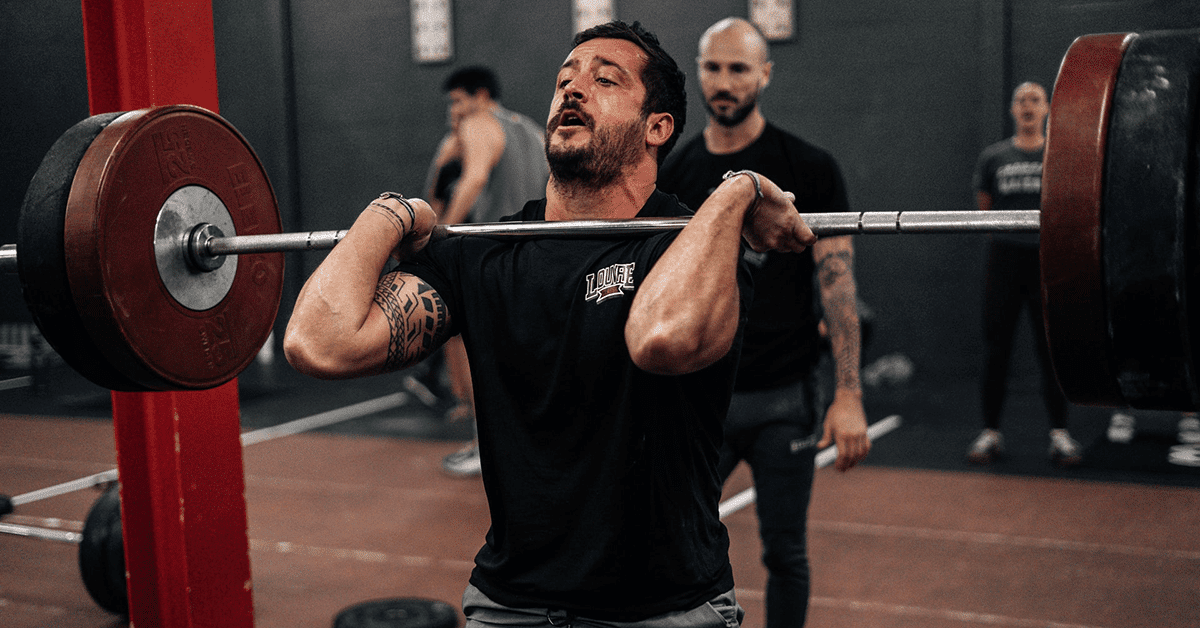
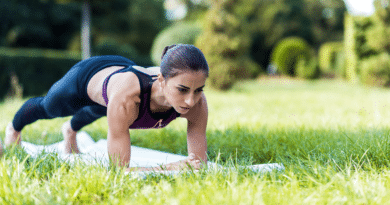
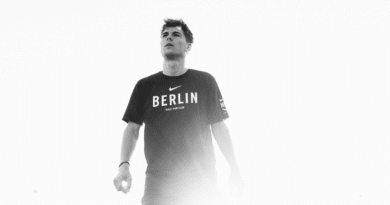

Comments are closed.